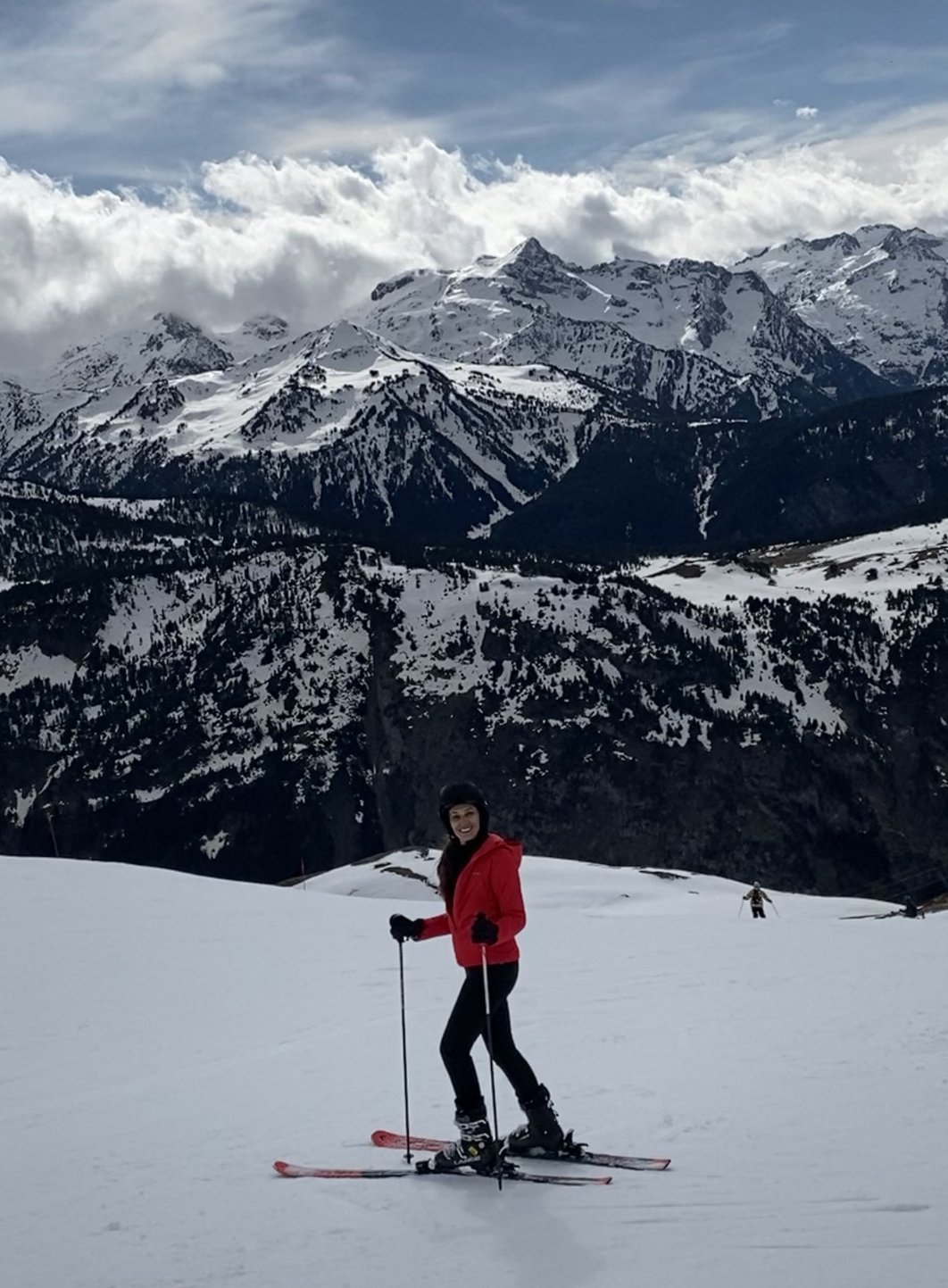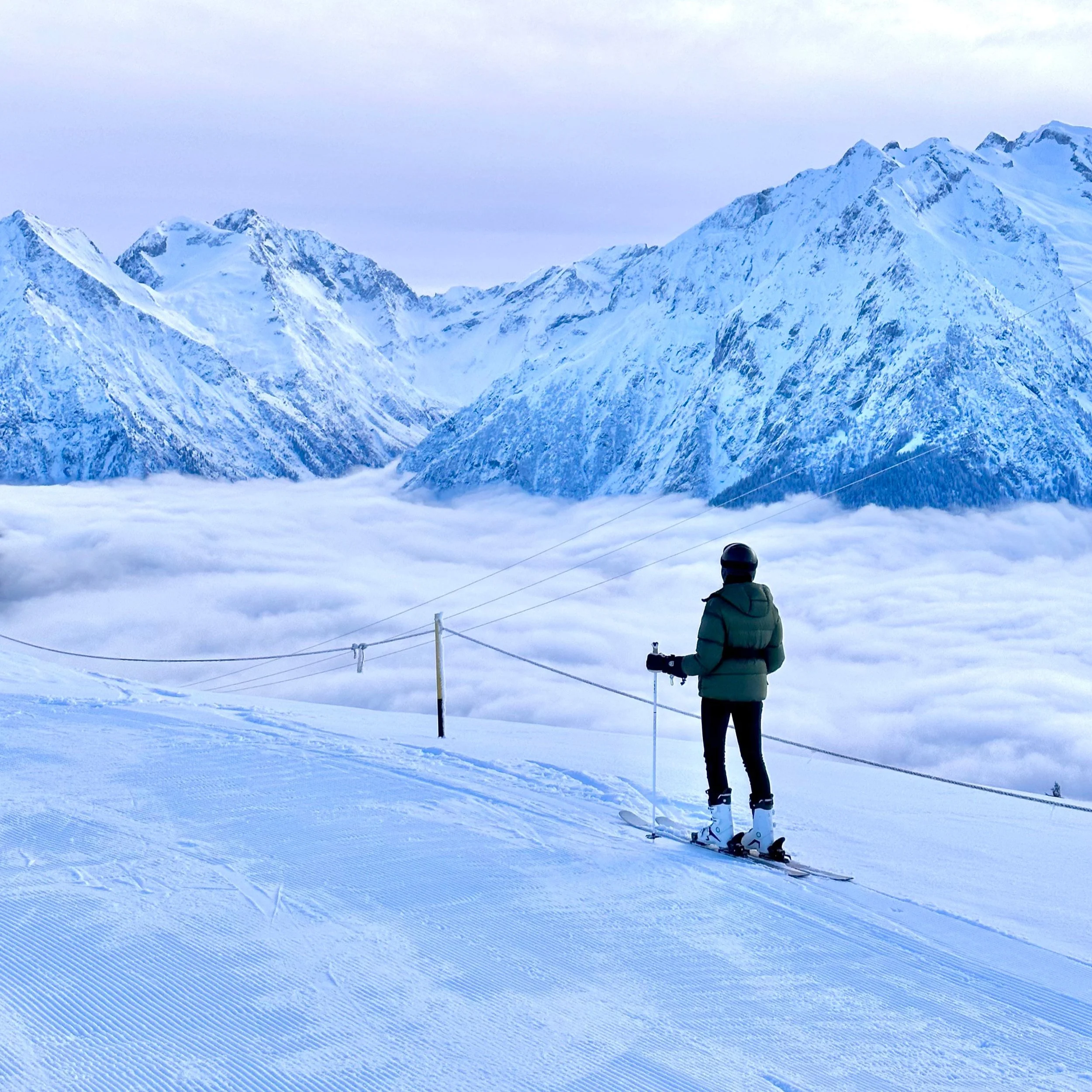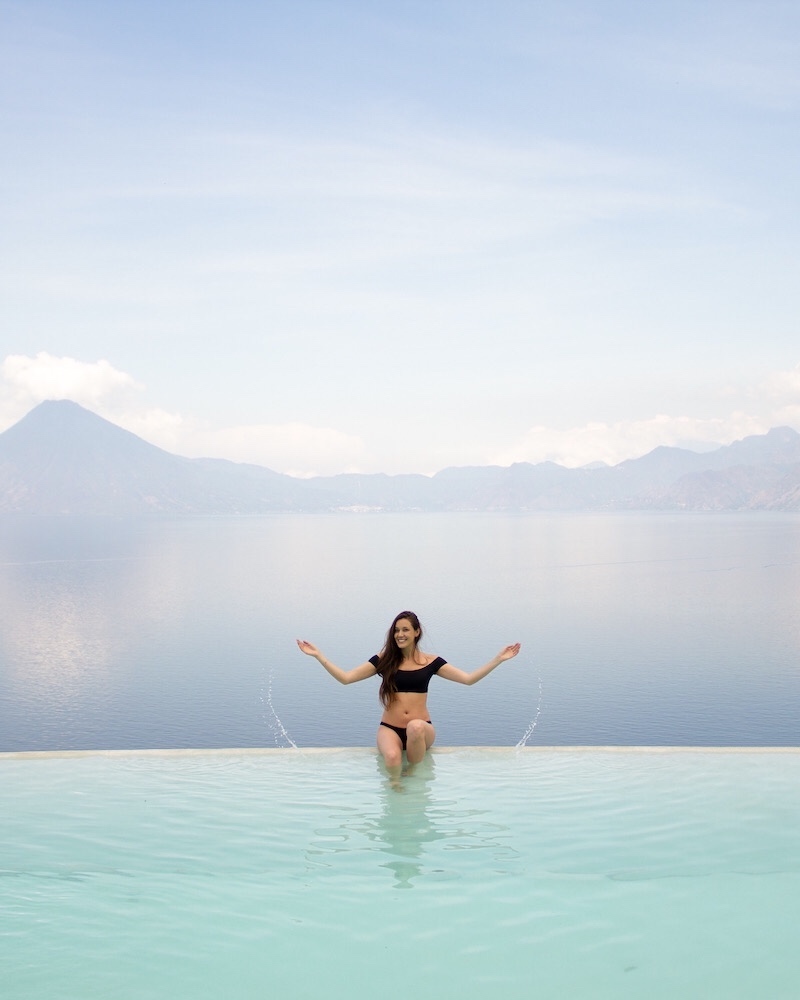How to Improve Your Skiing as an Adult: Tips You May Not Have Thought of Yet
/Learning to ski as adult may seem daunting, but by applying these practical tips, you will be on your way to improving your technique and having fun on the mountain in a matter of days.
I first attempted skiing in 2015 at 26 years old, but for the first three seasons I only made it to the mountain one or two days a year. I didn’t ski at all 2018 or 2019, and in 2020 and 2021 I skied 4-5 days a season. When I started going on longer trips and skiing more consecutive days, I really noticed how much faster I would improve by building upon my previous day’s progress. For the 2022 season, I was especially motivated to improve my skiing and decided to invest in a season pass. Due to my remote work lifestyle, I was fortunately able to relocate to Lake Tahoe for a month, and so far have skied 32 days this season.
I started the 2022 season very comfortable on blue runs, and was curious about the possibility of eventually graduating to blacks. Within the first two weeks of exploring different runs in various conditions, not only did I graduate to blacks, but I also got a taste of skiing on powder, on moguls, and in the trees when conditions would permit. I was then determined to reach a new goal: to build the confidence to be able to ski down anything. During my last two weeks of the trip, I worked on maintaining control at higher speeds and in different conditions, improving my technique on black moguls, and started getting a feel for skiing switch. At the end of my 30 days in Tahoe, I was easily averaging 30k vertical feet a day, skiing average distances of 20 miles a day, and averaging top speeds of 40mph on black runs. Though you may not have 30 consecutive days to commit to skiing, you can certainly apply these tips that helped me and you will definitely improve your technique and become a better skier.
Uncommon tips you may not have thought about to level up your skiing
1. Start training early
Preparation for a ski trip goes beyond travel planning, shopping for cold weather clothes, and acquiring or reserving your equipment. Skiing is a very physical sport, so building strength and getting in shape in the weeks before your trip will only help you. My favorite method of training prior to ski season is reformer Pilates, which builds core strength, improves balance, and also stretches and lengthens muscles. I’ve also found that at-home workouts using resistance bands have been helpful for me to get my leg and core muscles ready for skiing.
2. YouTube is a great free resource
There are countless helpful and informative videos on YouTube that cover every skiing topic; from general tips for beginners to technical tutorials for advanced maneuvers. Some of the most helpful videos I’ve seen for beginners include Tips for Getting On and Off a Ski Lift and How to Get Up When You Fall. As you advance, the videos only become more helpful, and I was able to apply some of the tips I learned from YouTube while practicing a standing nose stall and also for improving on moguls. It’s also helpful to watch a variety of videos on the same topics, because sometimes the way a move is explained by someone will not seem to be clear, but after hearing the way someone else explains it, it will immediately click. A few channels that offer great tips are Stomp It Tutorials and Ski School by Elate Media.
3. Invest in or rent quality gear
A quote I keep coming across reads: “There’s no such thing as bad weather, only bad gear”. It’s important to be prepared for the cold weather conditions, but if you are intent on improving, it’s equally important to be able to focus on the sport without distractions like being cold or wet, having to deal with a broken zipper, or wearing poorly-fitting clothes that don’t allow for a full range-of-motion. I’ve written an entire guide of all the apparel, gear, accessories, and extras that I use when I go skiing, that includes some additional tips for choosing quality ski clothes that you can also wear off the mountain. There are services that offer quality ski wear rentals like Rent the Runway, and any ski area will have a number of local options for renting and demo-ing gear. If you choose to rent your gear, consider making your reservation ahead of time at a local ski shop, and you will save considerably compared to renting same-day directly from a ski resort. Also, don’t forget your helmet!
4. Pay attention to the quality and clarity of your goggles
This bit of advice may be what helped me the most when it came to becoming a better skier. It wasn’t until I invested in high quality goggles that I realized how much easier it was to ski when I could clearly see the texture of the snow in front of me. It may seem like common sense, but it took some learning for me to realize my preferences and my abilities and inabilities to see well in different conditions. What is even more helpful is to have a set of interchangeable lenses so you can switch depending on the lighting conditions. Before I knew better, I would wear the wrong goggles (for example bright-light lenses on a very cloudy day), and because I could not clearly see the snow I would ski much more slowly and cautiously. When I learned to pay better attention to my lenses and invested in an interchangeable set, I was much more confident on the mountain and quickly began improving. You can read more about the goggles and lenses that I recommend and the rest of the gear I use here.
5. Get comfortable on a variety of snow conditions
The more days you can spend on the mountain, the more you will get to experience snow at different temperatures, textures, and lighting. And the more you can experience, the better. So much of improving your skiing or learning how to ski faster is being confident in your ability to stop on different slopes and on different conditions. For example, if you gain experience turning or stopping on ice, you will build confidence in doing so and you will be more comfortable any time you come across ice in the future. Similarly, if you gain experience turning and stopping at steeper inclines, the next times you ski similar inclines you will be confident in your abilities and will be turning and stopping more comfortably each time. You can actively gain experience on a variety of snow conditions by skiing at different times of the day (morning vs. afternoon) and by skiing different sides of a mountain, where the sides that are shadier may have icier conditions, and the other sides in direct sunlight may have softer snow.
6. If you want to get faster at skiing, practice on moguls
I’ve personally noticed my greatest advances occur thanks to spending time on moguls— first slowly, then progressively faster. If you can learn to appreciate skiing on moguls (trust me— I never imagined I would write these words, but here I am!) then you will notice how effortless skiing on a perfectly groomed piste or on fresh powder will feel. They are definitely intimidating, but even if you move through them slowly, the experience will help you improve tremendously. The next time you face similar moguls you will already be more comfortable, and the next time you experience a smooth surface you will appreciate it that much more.
7. If you want to improve at skiing on steeper slopes, repetition is key
The first time you look at and ski down a particular slope is when it will feel the steepest. As you progress to experiencing steeper inclines, I encourage you to repeat the same run a few times so you can notice the difference. If a run looks or feels steep and I’m able to ski down it, I’ll make a mental note and ski it again. Almost always, the subsequent times always feel less steep because I’m more confident and comfortable.
8. Spend more days on the mountain, instead of more time per day
Don’t tire yourself out! If you can commit to skiing multiple days, you won’t feel as pressured to have to ski even if the conditions are not ideal or if you are not feeling too great. The point of skiing is to have fun, and if you are pushing yourself to the point of exhaustion and are no longer enjoying yourself, then the purpose has been defeated. Learning and building skill comes easiest when you are fresh and motivated, and skiing while tired can be dangerous for you and others around you.
Skiing more days also has an added benefit of lowering your average cost per day, both for your lift ticket and also for your rentals in most cases. Of course, the greatest value is a season pass, but most resorts and ski areas offer multi-day tickets with discounts that increase the more days you ski. Skiing a single day is always the most expensive option: especially at a resort like Northstar California where I spent most of the 2022 season- the cost of a single day lift ticket there was about $180. By planning ahead and committing to skiing multiple days, I decided to purchase a Tahoe Local Epic Pass for $495, which also included up to 5 additional days at Vail’s Colorado resorts. After skiing 32 days for the season, my average cost per day to ski was only $15.50. With a daily cost that low, it was very easy for me to decide to head home after just a few runs on days that happened to get really crowded, or if I wasn’t feeling great for whatever reason.
9. Think beyond your closest resort
If you are looking for ways to ski more days in a cost-effective way, start small – local ski areas or independently-owned ski resorts unaffiliated with the big Alterra/Vail resort companies can be more affordable while still offering great terrain. A local ski area or independently-owned ski resort may also be more likely to offer half-day lift tickets, and may possibly not have restrictions on hiring your own independent instructor. Most of the big resorts strictly prohibit their guests from hiring their own independent instructors, and will only allow private or group lessons from their own instructors, in most cases at a very steep cost or oftentimes with minimum hourly requirements.
10. Think international
A few years ago when planning a week-long ski trip, I was seeing that the costs to do so in California (where I live) were pretty high, and expectedly even higher when researching a similar trip in Utah or Colorado, taking the costs for flights and a rental car into account. While living in Madrid a few months prior, I started hearing about a region in the Pyrenees that was popular amongst Spaniards for skiing. I did a little more research, and it ending up being less expensive to fly from California to Barcelona, rent a car, stay at a hotel beside the gondola, and ski five days in Baqueira Beret than it would have been to do a week-long trip at any of the big resorts in the US. I’ve since found that across Europe the prices for things like lift tickets, private lessons, ski apparel, and ski equipment are considerably less than what is offered and considered “normal” in the US. Our trip and experience at Baqueira Beret was wonderful, and I was able to improve my skiing while taking advantage of $50/day lift tickets and $50/hour private ski instruction, in a country and culture that I love.
Another great concept that offers a range of everything from cost-effective to ultimate luxury, with an added bonus of all the details being taken care of for you is an All-Inclusive Ski Vacation through Club Med, who have alpine resorts in France, Switzerland, Italy, and even in Japan and Canada. Aside from having all your gourmet meals, drinks, and lodging squared away, a Ski Vacation with Club Med will also include your lift tickets, group lessons, and après activities- all in some of the world’s most desirable ski destinations. I had a wonderful experience staying and skiing at Club Med Valmorel and Club Med Quebec Charlevoix- I would certainly recommend it and am looking forward to discovering more of their resorts in the winter months! You can click to read more about my experience at Club Med Valmorel or Quebec Charlevoix here.
11. Stick to the level that you’ve graduated to as you keep progressing
If you have graduated to blue runs, stick to blue and avoid green runs if you can. Once I was comfortable progressing to blues, I actually felt like skiing on greens was harder because I had to be so much more cautious while keeping my distance from other beginners that were not in control, would stop unpredictably, or would be seated behind a blind corner. Similarly, once I graduated to black runs, I felt it was easier to progress amongst skiers whose speed and technique I wanted to emulate. Of course, we all have to start somewhere and are at varying levels of ability, so my most important safety tip when improving your skiing and progressing to new terrain is to keep your movements very predictable. It’s the responsibility of the skier up the mountain to avoid the skier down the mountain, and this can more easily be done if the skier down the mountain has chosen and sticks to a predictable line. By making sudden stops or widening or changing their line, the skier down the mountain risks being harder to avoid, especially if the skier up the mountain is traveling at high speeds.
12. Don’t be afraid to ski solo (on piste!)
Years of traveling solo have taught me that if I had to wait for someone else to coordinate or make plans, I would have never seen or experienced some of my most rewarding travel memories— and I’ve learned that the same applies to skiing. If you’ve already taken lessons and are comfortable practicing your skills on your own, you will benefit from shorter wait times at lifts in the single’s line, less pressure if you don’t like the feeling of someone waiting on you while you’re still learning, and the freedom to decide when to start, stop, and take breaks as you wish. I personally have skied more days by myself than I have with friends, but the training and experience I’ve gained from these solo ski days have certainly made my ski days with friends much more fun and relaxing! Note: I only recommend solo skiing on piste— if you are hoping to ski off piste or in deep powder or low visibility conditions, it is always recommended to ski with a buddy and stay within sight! You can read my full blog post about the benefits of skiing solo here.
13. Keep track with ski tech
There are helpful tools to help you track your progress while skiing, and using apps and tech to track your speed and technique can motivate you to get to the next level and also serve as a reference to see how far you’ve come as you improve naturally. During my last few weeks of skiing in Tahoe, I used the Slopes app to time my runs, measure my speed and distance, and write in notes in the dedicated space keep a daily log of what I worked on and what the conditions were like. The first black mogul run I ever tried definitely took me over 20 minutes to get down, and by the end of it I was exhausted. It was nice to be able to progress over the next couple of days and then see in the Slopes app that I was able to ski down that same run in under 5 minutes, all while feeling much more confident and much less tired. Another highly rated tool is CARV, which guides your technique based on your balance and pressure captured by an insole you wear in your ski boot. I imagine this would be a helpful guide once a skier has already advanced considerably and can benefit from the minute adjustments and direction this tool would share. I haven’t personally tried CARV but am curious how helpful it would be!
Though I was off to a slow start when I first attempted skiing at the age of 26, it didn’t take long for me to learn how much I loved the sport. I’m grateful that I wasn’t discouraged on my first few days, and have been able to commit to multiple days and now entire seasons to getting better. Do you have any questions about any of the tips I’ve described in this article, or have any recommendations? Let me know in the comments below!
About the author
Meet Carina Otero, avid skier and the creator of She is Not Lost, an online community for celebrating female travelers and a blog providing helpful tips, useful information, and inspiration for your future travels. Carina’s passion for skiing and love of writing and photography have inspired a new blog to share her experiences and personal favorites relating to the sport:
Discover Ski is Not Lost
This post contains affiliate links and at no cost to you, I may earn a commission which allows me to keep this site free for all readers. I only recommend products, brands, and services that I personally use and believe in.






































